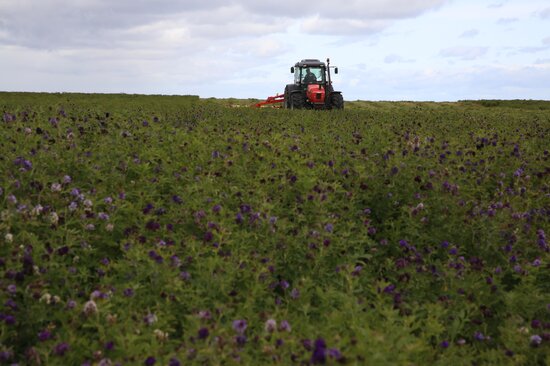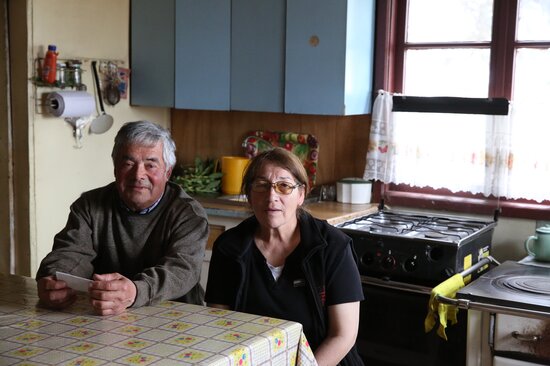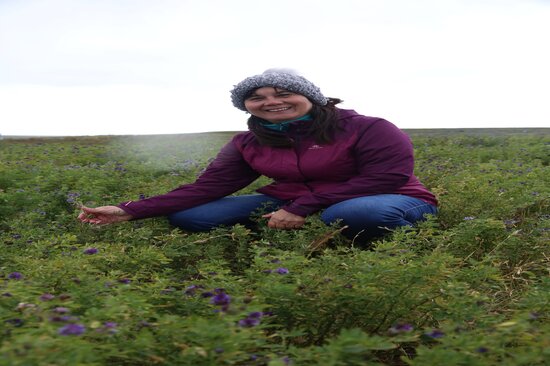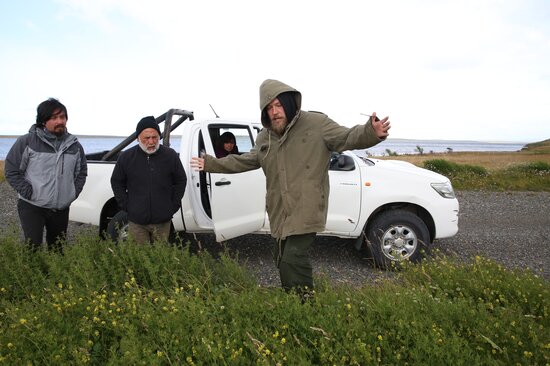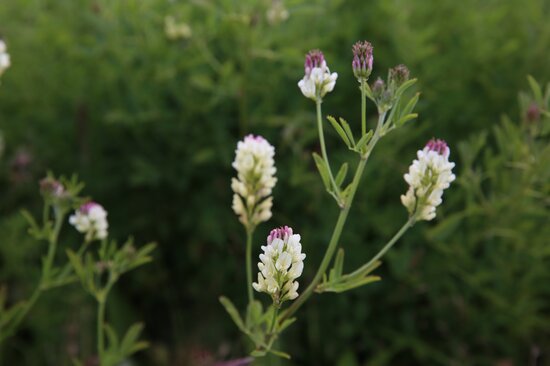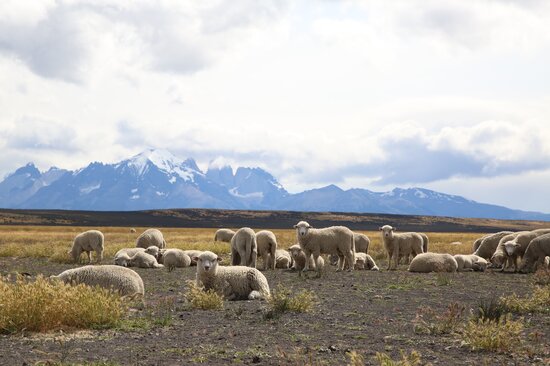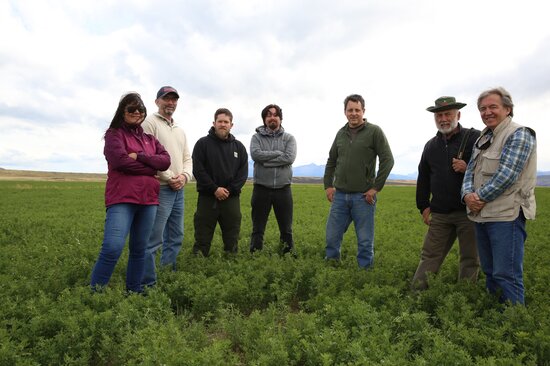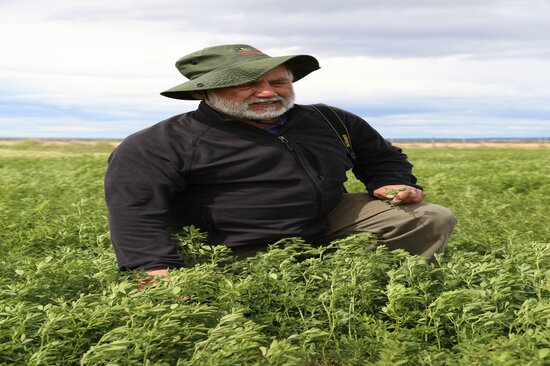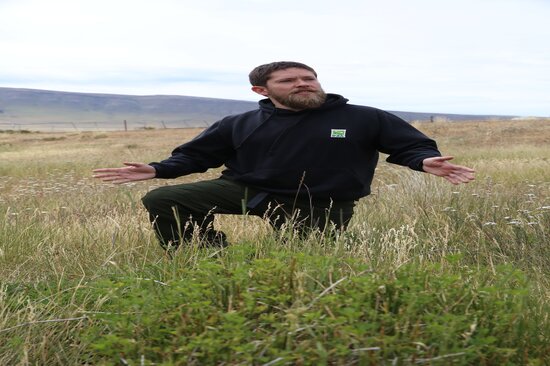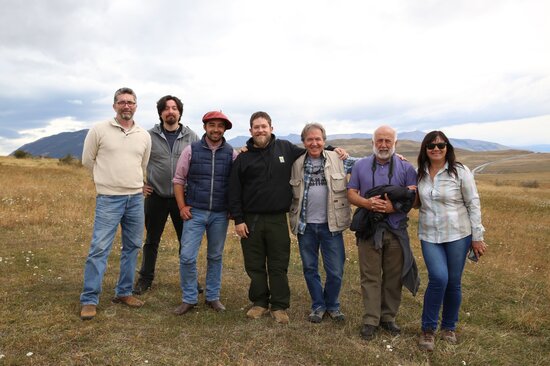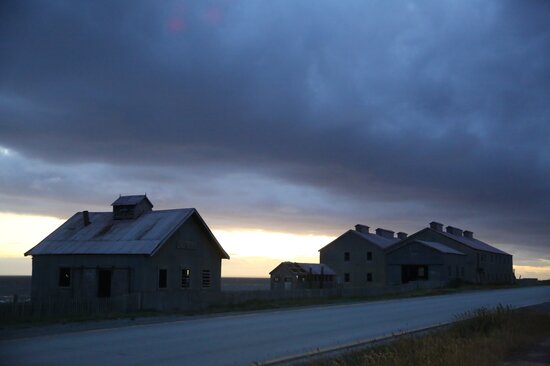Patagonian Farmers Welcome Climate-Resistant Alfalfa
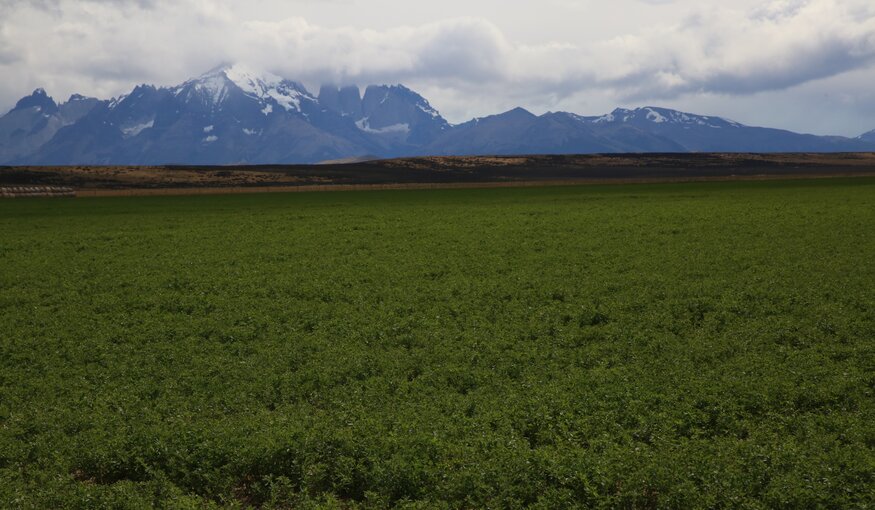 Alfalfa, the “queen of the forages”, is one of the most important of livestock feeds. It has excellent nutritional value, and today it is grown in more than 80 countries, including Chile, where our Crop Wild Relatives partners INIA are evaluating plants that have been derived by crossing cultivated alfalfa varieties with wild relatives with the aim to develop types that are adapted to the drought and the cold of this bleak but beautiful austral landscape. Photo: LS Salazar/Crop Trust
Alfalfa, the “queen of the forages”, is one of the most important of livestock feeds. It has excellent nutritional value, and today it is grown in more than 80 countries, including Chile, where our Crop Wild Relatives partners INIA are evaluating plants that have been derived by crossing cultivated alfalfa varieties with wild relatives with the aim to develop types that are adapted to the drought and the cold of this bleak but beautiful austral landscape. Photo: LS Salazar/Crop Trust13 July 2020
This slideshow presents a brief, but wide-ranging, look at the importance of alfalfa in Chile’s Magallanes region. More specifically, it highlights how and why our partners at the Institute for Agricultural Research (INIA) are evaluating new alfalfas that have a little of their wild relatives in them. Their work will ultimately help ranchers better deal with the erratic climate that is more and more a part of our daily lives, everywhere. But before that, let’s start by having a look at this austral landscape and the sheep ranching that is an integral part of life in the southernmost region of Latin America. Ready?
Rugged and beautiful, windswept and largely void of human traces, barring sporadic clusters of estancia houses and sheds, the wide-open prairies of Magallanes seem to stretch on forever. (Estancias in southern South America have historically been estates used to raise livestock.) Local farmers knew this endless carpet of grass was the ideal setting for sheep back in the 1860s, when they introduced the first animals from the Falkland Islands to the lands around the Straits of Magellan.
Today, sheep farming has grown to be one of the most important economic activities in Chile’s Patagonia. But the 150 years or so of grazing, and sometimes overgrazing, have degraded the land, in some cases beyond recovery. As a result, many sheep farmers have been forced to reduce the number of animals they maintain in their estancias. Keeping the animals well-fed, which ultimately determines the ranchers’ earnings, has also proven challenging.
If sheep ranchers want to stay in business for another 150 years, and beyond, they cannot depend – as most have done until now – solely on natural grasses and paddock rotation for their livelihood. Ranchers have a range of options to get natural pastures to recuperate. Some are seeing very positive results by incorporating alfalfa into their livestock management operations.
But alfalfa varieties currently available in Magallanes have not been bred to face the particular challenges of the region. Thus, under the Crop Wild Relatives Project, the Crop Trust is supporting pre-breeding partners from INIA who are evaluating new alfalfas that can withstand extreme cold temperatures and dry environments, and perform well in poor soils.
These new alfalfas were developed by crossing commercial alfalfa varieties with wild relatives of the crop. This challenging and laborious task was carried out at the other end of the world, by researchers from the South Australian Research and Development Institute (SARDI).
“Alfalfa is the best option for most producers in Magallanes, as it can survive long stretches of drought,” said Alan Humphries, leader of this four-country pre-breeding effort. “It has excellent nutritional value and adds nitrogen to the soil. Growing alfalfa means livestock producers can carry out their activities in a more sustainable manner, allowing natural prairies to rest for longer periods of time during the flocks’ rotations.”
“If more and more ranchers adopt and intensively manage alfalfa in the precious few small, fertile valleys found in the region, this will allow thousands of acres to recover, and – for the first time in a hundred years – prairies will be able to rejuvenate,” Alan added. “This practice will undoubtedly also improve their production and their profit. It’s a win-win-win – for the ranchers, the sheep, and the environment.”
To see first-hand the progress made to date, I visited Magallanes earlier this year. In a five-day whirlwind expedition, I traveled more than 1,000 kilometers, visiting pre-breeding trials sites and sheep producers. As well as people and enterprises who, directly or indirectly, will benefit from alfalfa that is better suited to the harsh, unique weather of Chile’s magnificent Patagonia.
My visit was organized and hosted by Jorge Ivelic, the INIA researcher who, among many other things, is in charge of the CWR alfalfa evaluations in Magallanes. Accompanying us were researchers Carlos Ovalle and Viviana Barahona, from the central part of Chile, where the most efforts under this Crop Wild Relatives Project are being undertaken, including working with small-scale farmers. I thank Jorge, as well as all his INIA colleagues, for an inspiring, insightful experience. And I look forward to seeing the further results of their efforts in the coming years.
Category: Alfalfa
About the Crop Wild Relatives Project
The Crop Wild Relatives Project was developed to collect important species of crop wild relatives, ensure their long-term conservation and facilitate their use in breeding new, improved crops. This 11-year project was launched in 2011 with USD 50 million in funding from the Government of Norway. Managed by the Crop Trust with the Royal Botanic Gardens, Kew, the project was implemented in partnership with national and international genebanks and plant breeding programs around the world. The work is continuing under the “Biodiversity for Opportunities, Livelihoods and Development” (BOLD) Project, which is also funded by the Government of Norway.


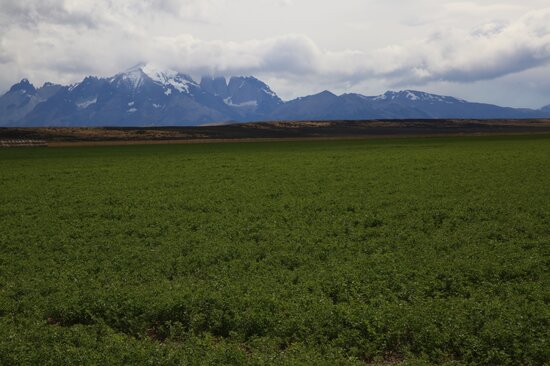

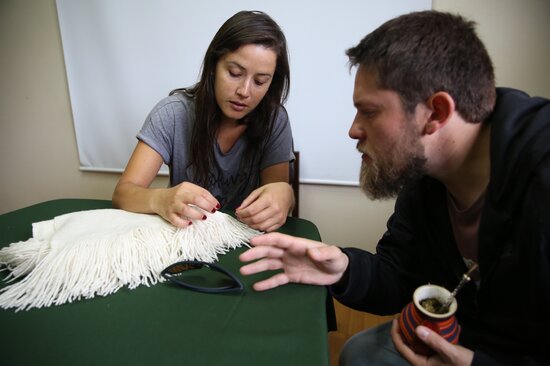

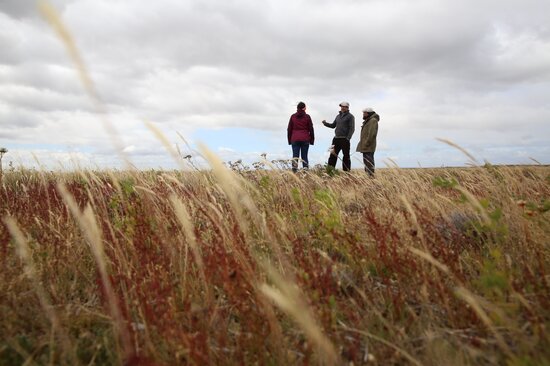
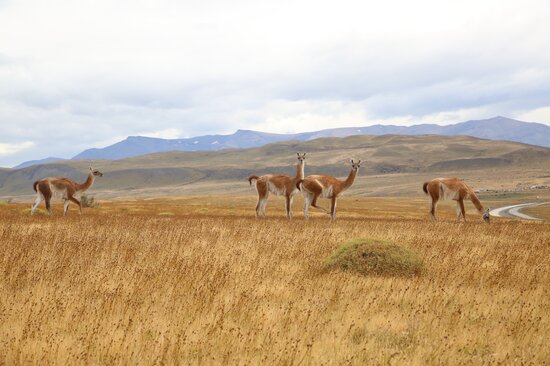
![At Estancia Los Niños, Rene Milicevic shows us one of the three 60+ year old alfalfas that Jorge Ivelic from INIA collected in Magallanes [growing behind the ‘daisy’]. This unique sample is now included in the Crop Wild Relatives pre-breeding trials at INIA Kampenaike. Tolerance to drought and frost are traits that researchers are looking for in Magallanes. In the central part of Chile, researchers are searching for drought and heat tolerance. Photo: LS Salazar/Crop Trust](/fileadmin/_processed_/1/d/csm_BI5A1289_94eb52bc12.jpg)
